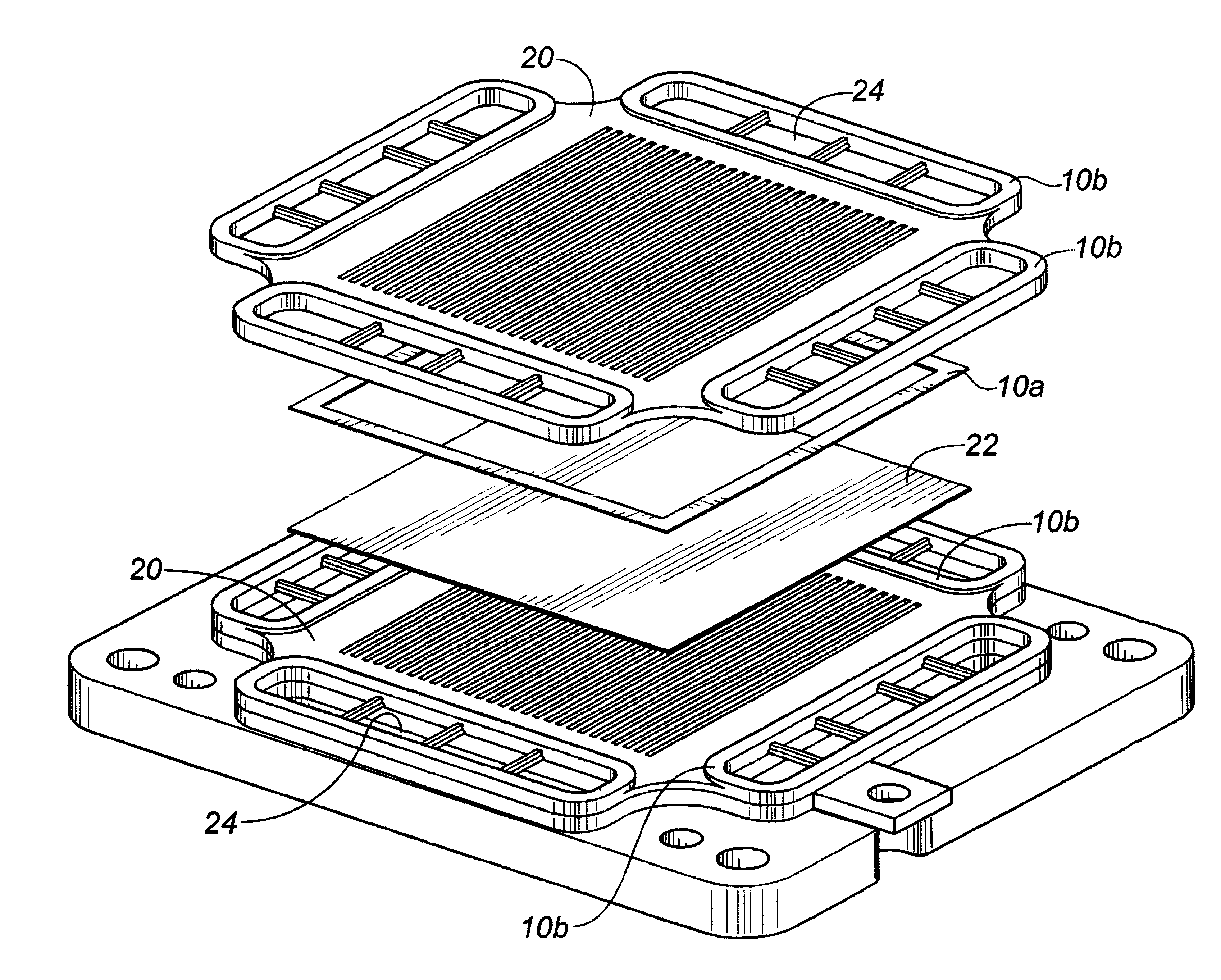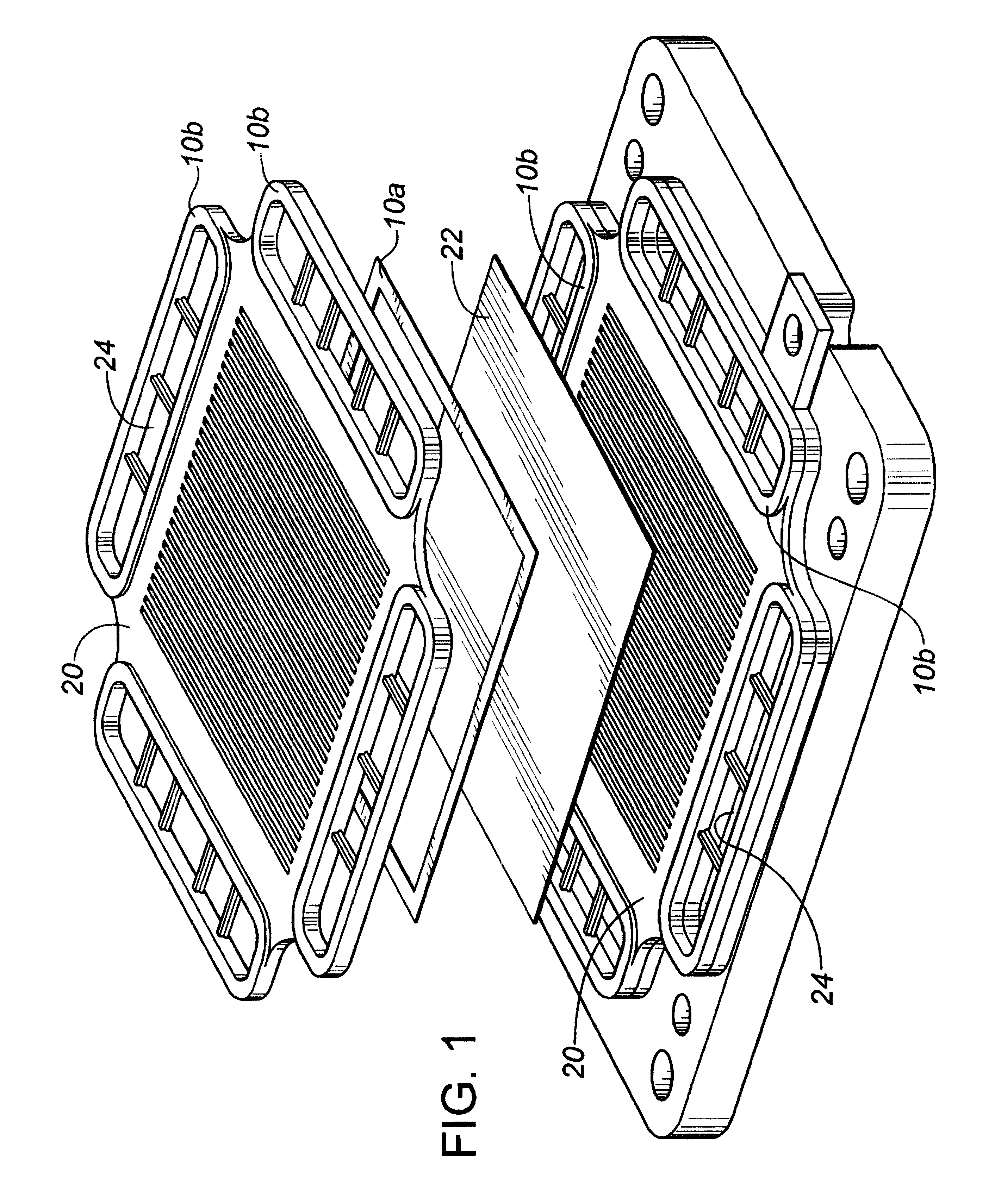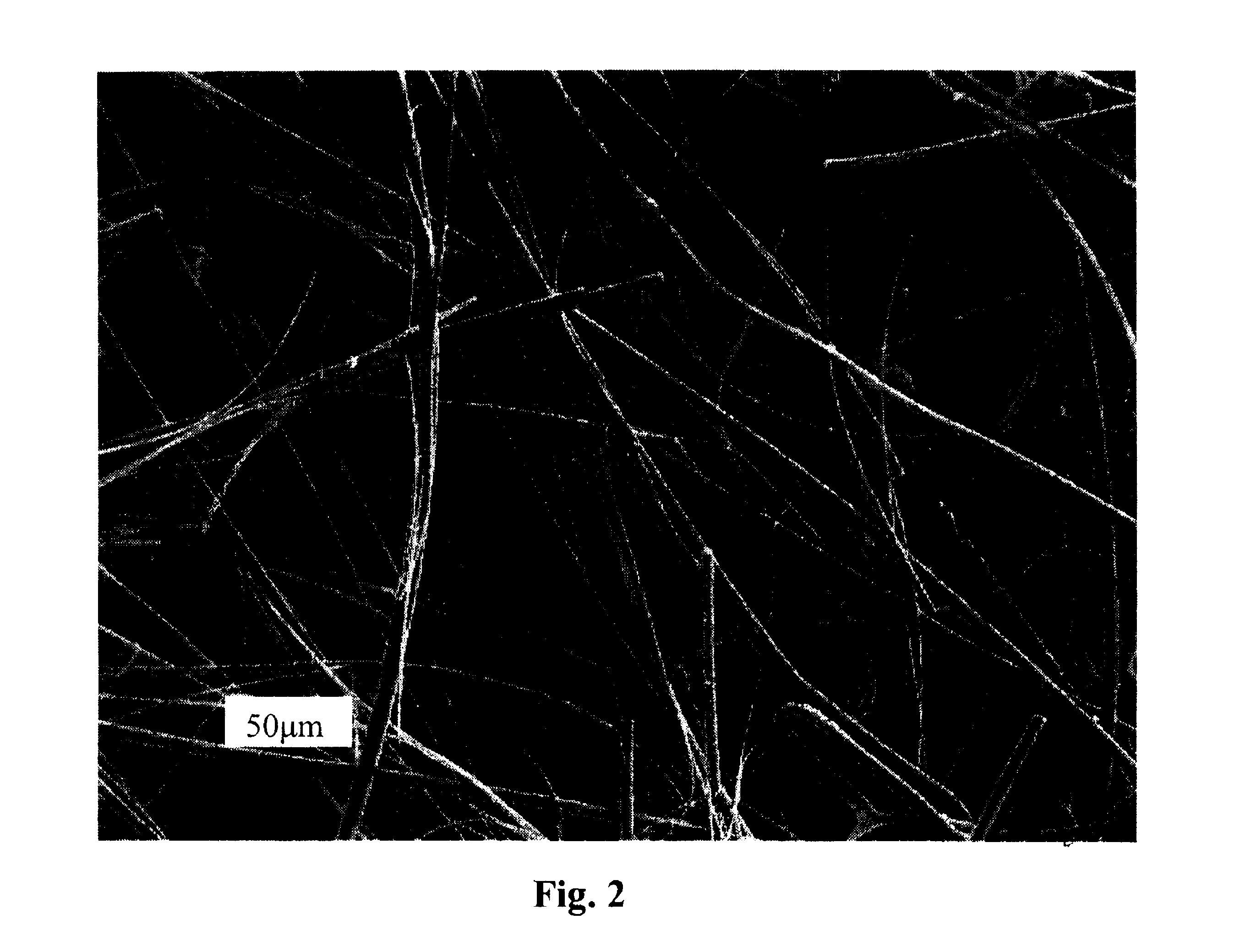High temperature gas seals
- Summary
- Abstract
- Description
- Claims
- Application Information
AI Technical Summary
Benefits of technology
Problems solved by technology
Method used
Image
Examples
example 1
Preparation of Dip Impregnated Seal and Room Temperature Leakrate Testing
[0047] Zircar.TM.0.040"Al.sub.2O.sub.3 fiber felt was cut out into seal size 10.times.10 cm. The cut pieces of Zircar were then placed on a small square of Mylar.TM.(about 15 cm.times.15 cm) and immersed in either (A) 8 vol % zirconia or (B) 10 vol % Al.sub.2O.sub.3 suspension solutionbath for 15 seconds using light agitation. The Mylar.TM. was then lifted and tilted in a circular motion to distribute the remaining solution and to allow any excess solution to drip off. The seal was allowed to dry on the Mylar.TM. sheet for approximately 90 minutes. Once dried the weight, Wd, was recorded and some of the seals were dipped 2 or 3 times with weight recorded after each dipping.
[0048] Leak rate was measured at room temperature with air as test gas, the test device is composed of two polished steel plates, hydraulic pressure supplier, pressure sensor, air pressure adjustor and gauge, and leak rate flow-meters. The th...
example 2
Tape Cast Seal Formulations
[0053]
2TABLE 2 Tape Cast Seal Formulations Trial Fibre Fibre Powder # Type Wt % Wt % Solvent Plasticizer 1 Saffil HA 15 85 MEK / EtOH PEG / DBP 2 Saffil HA 20 80 MEK / EtOh PEG / DBP 3 Saffil HA 20 80 MEK / EtOH PEG / DBP 4 Saffil RF 20 80 MTBK / Toluene / Santicizer 160 .TM. EtOH
[0054] Tape cast seals were formed by mixing alumina fibres with alumina powder in either 15:85 or 20:80 weight proportion, on a ceramic basis. A tape-casting slurry was formed using either methyl ethyl ketone (MEK) (66.6 wt %) and absolute anhydrous ethanol (33.3 wt %) as the solvent system or a mixture of MIBK, toluene and anhydrous ethanol. The MEK / EtOH formulations use polyethylene glycol 400 (PEG) and dibutyl phthalate (DBP) as the plasticizer, while the MIBK solvent system utilized Santicizer 160.TM. (benzyl butyl phthalate). Either Butvar.RTM. B76 or B79, or mixtures of both, were used as polyvinyl butyral (PVB) binders, which include small amounts of polyvinyl alcohol and polyvinyl aceta...
example 4
Density, Shrinkage and Leakrate Testing
[0058] Density and shrinkage data were collected for each tape. Four 1 square inch pieces were cut and measured for density. Two of these pieces were then fired at 750 deg. C. for 1 hour to burn out the organics. These same pieces were then re-measured to determine their post firing density and shrinkage values. Table 4 is a summary of this data.
4TABLE 4 Density and Shrinkage Summary Average Green Fired Green Fired Green Average Average Trial Density Density Porosity Porosity Thickness Shrinkage Shrinkage Leakrate # (g / cm.sup.3) (g / cm.sup.3) (%) (%) (mm) X - Y (%) Z (%) (ml / min / in)* 1 2.78 2.51 29.9 36.7 0.515 -0.05 -1.17 0.03 2 2.18 2.03 45.1 48.9 0.875 -0.06 -0.69 0.05 3 2.86 2.54 28.0 36.0 0.455 -0.04 0.10 0.03 4 2.53 2.29 36.4 42.3 0.519 0.29 -0.10 0.03 *Leakrates were tested at a 50 psi compressive force, 750.degree. C., 0.5 psi air. The test device detection limit was 0.03 ml / min / inch.
PUM
| Property | Measurement | Unit |
|---|---|---|
| Porosity | aaaaa | aaaaa |
| Porosity | aaaaa | aaaaa |
| Porosity | aaaaa | aaaaa |
Abstract
Description
Claims
Application Information
 Login to View More
Login to View More - R&D
- Intellectual Property
- Life Sciences
- Materials
- Tech Scout
- Unparalleled Data Quality
- Higher Quality Content
- 60% Fewer Hallucinations
Browse by: Latest US Patents, China's latest patents, Technical Efficacy Thesaurus, Application Domain, Technology Topic, Popular Technical Reports.
© 2025 PatSnap. All rights reserved.Legal|Privacy policy|Modern Slavery Act Transparency Statement|Sitemap|About US| Contact US: help@patsnap.com



